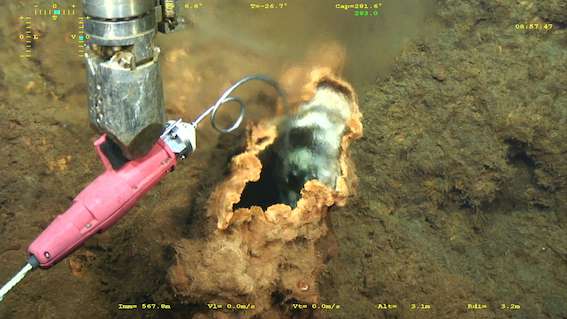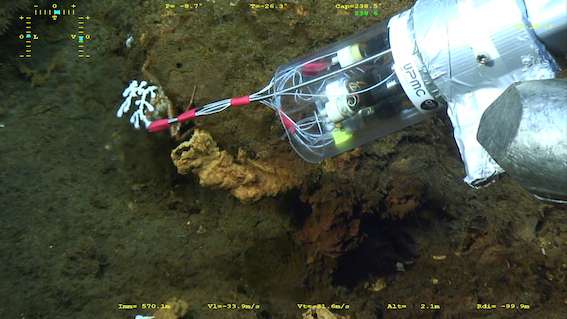L’Atalante 2018
Luso Hydrothermal Vent-field 2018
Summary
Luso Hydrothermal Vent-field 2018
The main objective of the Luso Hydrothermal Vent-field 2018 expedition was to collect sufficient information and samples for a proper description of the newly discovered LUSO hydrothermal vent. Specifically, the mission aimed to collect information i) on the geological and geochemical description of the area; ii) on the chemical composition of the vent fluids and gases, and on the environmental parameters that can help describing the area of influence of the vent; iii) on the biology and microbiology of the vent field; iv) the background fauna, mostly cold-water corals and sponges and v) to produce a photo-mosaic of the vent field. For this purpose, a detailed dive plan based on the video footage collected during the first scientific mission in June identified three priority areas to be visited: (1) the main venting area with the largest identified vent chimney; (2) a secondary venting area composed of smaller active vent chimneys; (3) an inactive vent field area.
Following the discovery of the Luso hydrothermal field during the scientific Blue Azores 2018 expedition that took place in May and June, a follow up one day scientific sampling mission as part of the TRANSECT scientific campaign onboard the ship RV L'Atalante took place on August 4th. The mission was coordinated by Telmo Morato, chief scientist of the deep water exploration of the Blue Azores expedition, in close collaboration with Nadine Le Bris, chief scientist of TRANSECT scientific campaign. The Portuguese team participating in the mission was composed of 4 scientists with different expertise in research areas of hydrothermal vents (e.g., geology, chemistry, ecology, microbiology) and the chief pilot of the Portuguese ROV Luso from EMEPC.
Statistics
Highlights


Location of operation
Luso hydrothermal vent, Gigante seamount (Azores EEZ)
Stations
L’Atalante 2018
| Leg | Period | Days at sea | Vessel | Departure | Return |
|---|---|---|---|---|---|
| 1 | 04/08/2018 - 04/08/2018 | 1 | RV L'Atalante | Horta | Horta |
A total of 1 days at sea
Activities
Scientific crew
Collaborators
Authors list
10.5281/ZENODO.6557934
Location
Departamento de Oceanografia e Pescas — Universidade dos Açores
Rua Prof. Doutor Frederico Machado, No. 4
9901-862 Horta, Portugal
Contact
Email: azoresdeepsea@gmail.com
AZORES DEEP-SEA RESEARCH © 2020-2025 — RELEASE 2.0.3
 VALTER MEDEIROS
VALTER MEDEIROS